The Most Popular Kitchen Design Trends Of Every Decade
Some of these styles from the past century have cycled back into fashion today.
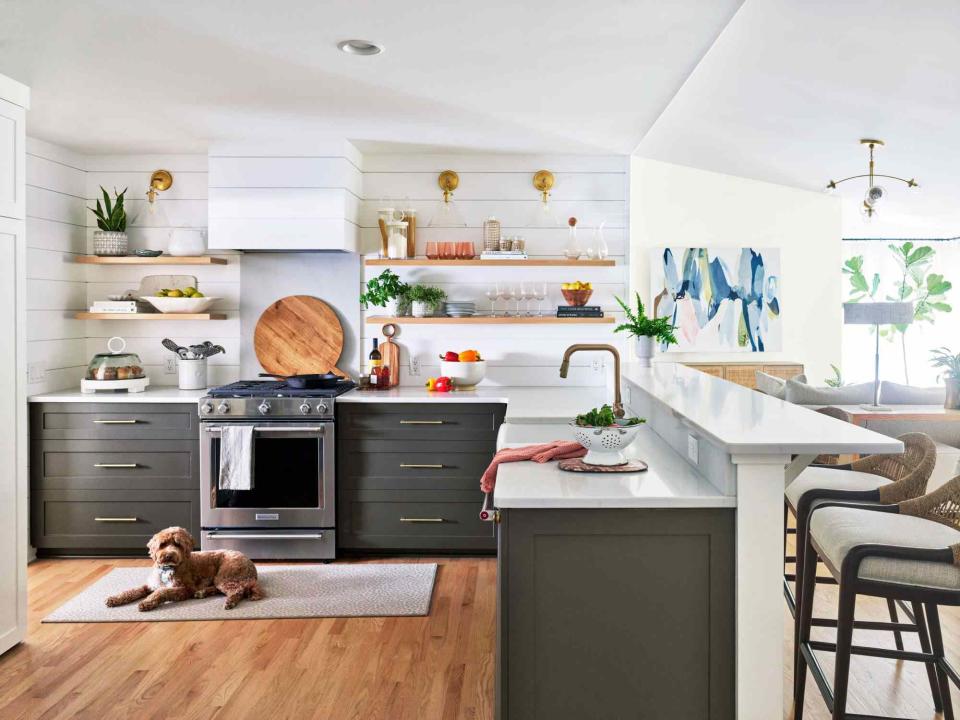
Trends are cyclical. Whether it is fashion or home decor, trends that were once at the height of style fade into obscurity only to eventually become trendy once again. That means Grandma’s kitchen from days past may be back in style. As they say, what comes around goes around.
Focusing on the kitchen as the heart (and stomach) of the home, we begin our homefront history in the 1920s, a century ago. Decade by decade, we’ve compiled the essence of each period shown by how people decorated their homes. From one era to the next, popular styles varied drastically, and not every trend has circled back into style. While we’re happy to see some retro styles come back into fashion, there are others that we hope we never see again. We’ll let you decide which trends are worth repeating.
Meet The Experts
Courtney Thomas is the founder and virtual interior designer of Crew Hill Designs in Oklahoma City, Oklahoma.
JuliAnne Kelly is the owner and principal designer of Carrier Design Co. in Jacksonville Beach, Florida.
Lisa Shaffer is the CEO and creative director of Lisa & Leroy , an interior design firm in Washington, DC.
Mary Tobias Miller is the owner of Abode Home and Mary Tobias Miller Interior Design in Charlotte, North Carolina.
1920s & 30s: All About Art Deco
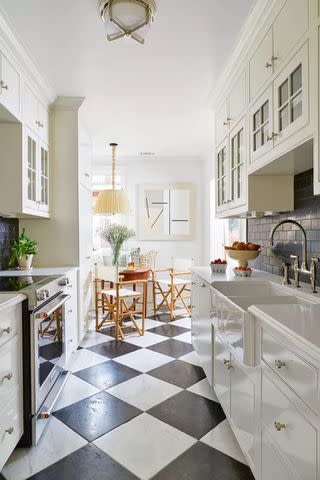
HECTOR MANUEL SANCHEZ
Modern kitchen with a 1920s-inspired checkered floor.“When I think of design from the 20s, I think of Art Deco: dramatic colors, geometric patterns and glamorous luxury,” says interior designer Courtney Thomas. In agreement, designer JuliAnne Kelly says that this period was marked by checkered flooring and lots of Art Deco inspiration.
1940s: Retro Rules
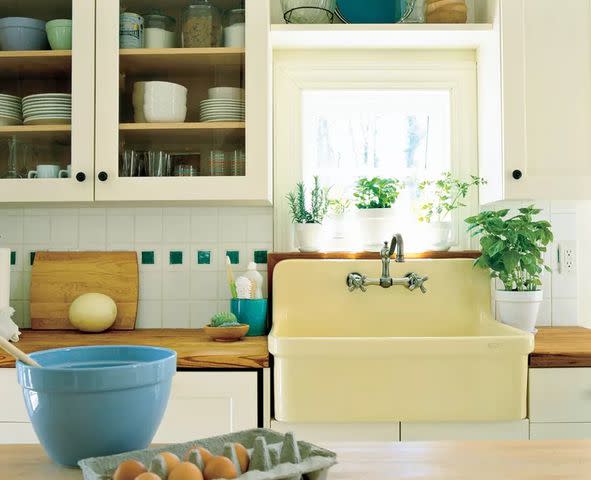
ERIK JOHNSON
This modern kitchen features a butter yellow sink reminiscent of 1940s color palettes.For Kelly, the 1940s sparks images of colorful homes. In this period, hues including butter yellow and cherry red commonly graced kitchen cabinets and tile. Geometric patterns such as herringbone were also popular in 1940s kitchens, as was bent wood furniture. In this era, Art Deco declined in favor of more traditional motifs and styles with pops of primary color.
1950s: Nuclear Chic
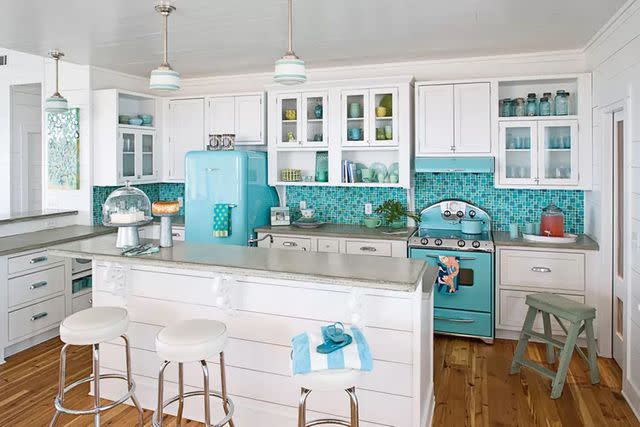
RICHARD LEO JOHNSON
Aqua hues, including vibrant retro furniture, ground this contemporary kitchen in 1950s style.Pastel colors were a fixture of 1950s home decor, especially in kitchens where aqua was a common cabinet color—complete with linoleum floors and vibrant appliances, of course. During this time, atomic motifs also blew up in popularity. Atomic boomerangs could be seen in many homes across the South.
1960s: Mid Century Modern
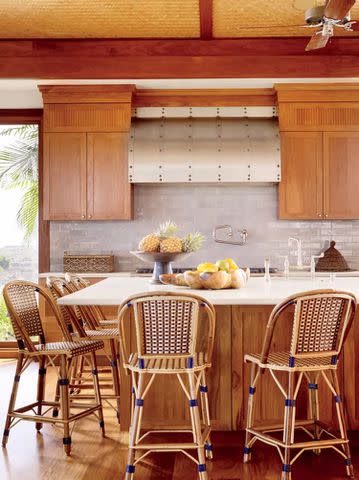
MATTHEW MILLMAN
Wooden cabinets, as seen in this modern kitchen, rose to popularity in the 1960s and have stuck around since.In the 1960s, home decor took a turn from the last decade. In the 60s, the Pop Art movement was accompanied by psychedelic influence, particularly in textiles featuring groovy patterns. Kelly also notes that in the 1960s, homeowners moved towards wood cabinetry, as opposed to steel, which was popular in the 50s. Additionally, homeowners during this decade showed off newfangled technology. Whereas today, we often try to tuck away kitchen appliances, 1960s folk displayed innovative products proudly.
1970s: Kitsch In The Kitchen
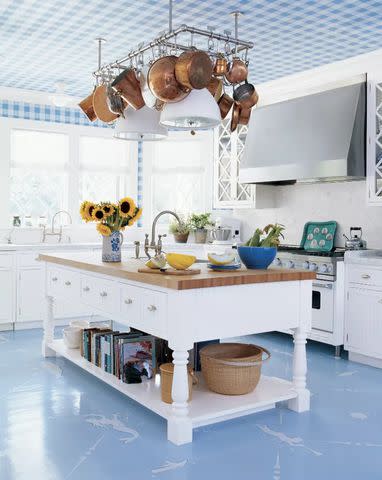
TRIA GIOVAN
This 1970s-inspired kitchen is just on the right side of kitschy and features a bold ceiling, as was popular during the time.The 1970s was the era of kitsch. Kitchens in this period reflected homeowners’ personalities and were often filled with a multitude of muted colors. Paneled walls were also trending during the 1970s, as was Terrazzo. “Terrazzo came onto the scene in the 20s but its popularity exploded in the 70s, mostly in flooring,” says Thomas.
The 1970s also featured statement ceiling and soft shapes, according to interior designer Lisa Shaffer. “The 70s introduced the idea of open floor plans with bold colors, floating staircases, double-height spaces, and larger windows,” she adds.
1980s: “More Is More”
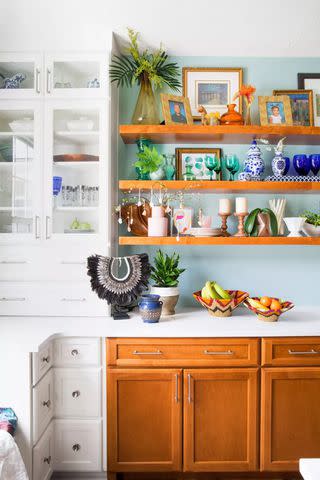
CASA WATKINS LIVING
Maximalist elements in this modern kitchen can be traced back to 1980s trends.In the 1980s, “bright color and opulence was the rule with layers and layers of accessories,” says interior designer Mary Tobias Miller. “The pillows on the sofa were the same fabric as the Drapery. The color palette either matched or coordinated. There were lots of heavy trims.”
Miller points to iconic designers of the era including Mario Buatta, also known as ‘The King of Chintz.’ “He [Buatta] established the love of the English Country Cottage mixed with bright color chintz fabrics,” says Miller. “His philosophy in this time of abundance was that ‘More is More.’ He would layer collectible objects in every square inch of a project.”
This involved porcelain flanking art on the walls. Plus, Kelly points out that raised Panel Wood cabinets, square backsplash, floral wallpaper were additionally popular in kitchens during this time. Meanwhile, Shaffer adds geometric shapes, bold color combinations, and graphic patterns to the 80s’ equation.
1990s: European Invasion
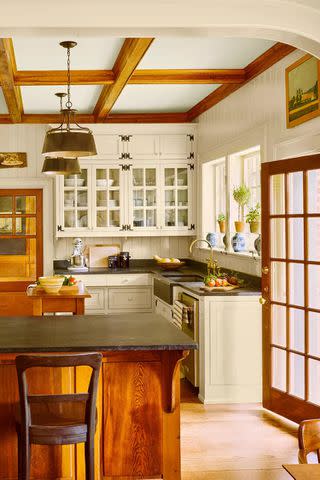
LARSEN & TALBERT
Erin Napierâs countryside kitchen was inspired by European cottage style, as was popularized during the 1990s.Evolving from the trends of the 1980s, Miller reveals that an “‘all things European and especially English’ trend trickled into the South in the 1990s.”
“French and English antiques were the rage,” she says. “Designers were traveling overseas to buy up containers of everything from period 18th-century goods to ‘reimagined’ pieces which might be made up of the top of one piece of furniture and the bottom of another.”
During this time, large porcelain collections could be seen in homes across the South, as could Asian rugs and chinoiserie pieces. Kelly further notes that grainy oak cabinetry was all the rage in kitchens during the 90s.
2000s: Sanctuary Style
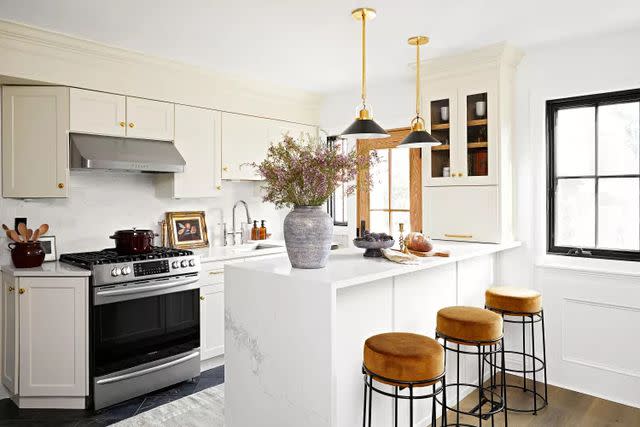
KEYANNA BOWEN
This serene, neutral kitchen is rooted in early 2000s style.“The affordable period antiques were becoming scarce and at the same time people were in search of calm in their homes—their sanctuaries,” says Miller of the transition happening in homes in the 2000s. “Colorful opulence made way to a neutral, calming palette. Think of a Restoration Hardware vibe. Soft painted neutral and blue pieces were sought after and a casual elegance was desirable.”
In some cases, Kelly reveals that this neutral wave often translates into a Tuscan theme in many kitchens, featuring warm woods and dark stone countertops. What’s more, in the early 2000s, Miller reports that adjacent formal living rooms gave way to increasingly popular family rooms.
“Family rooms were often an extension of the dressier, sleeker kitchen,” she says. “Entertaining became less formal in the 2000s and a little more family style. A scullery might have been added for the more functional aspects of entertaining like dish washing.”
2010s: The Age Of Minimalism
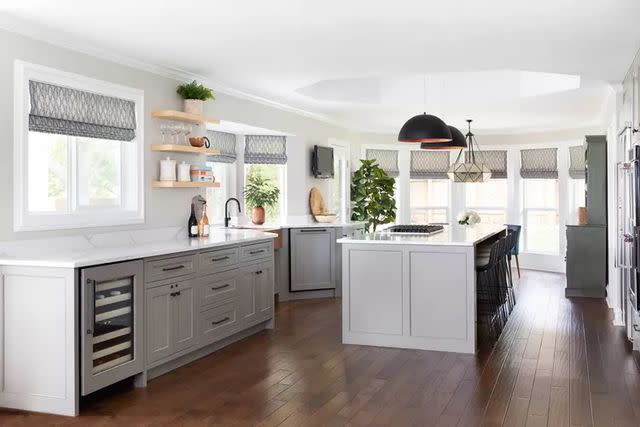
MOLLY CULVER
This roomy kitchen is decorated with a minimalist edge, as was popular in the 2010s.Larger kitchens were a staple of the 2010s in comparison to previous periods, and islands often took these large kitchens by storm. Stainless steel and glossy countertops were almost guaranteed to be present as well.
Although kitchens were formatted to be more spacious in the 2010s, that didn’t mean that more stuff was added in that newfound space. Instead, minimalism took over. Curated design and gray and white color palettes were very popular during this decade.
What’s Come Back Around
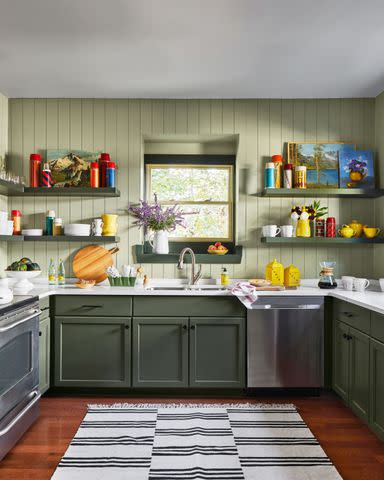
Laurey W. Glenn
Not all home decor trends cycle back into style, but it’s safe to say that some motifs of the last decade are reemerging. Today’s style represents a mod-podge of styles from the past and represents looks from several periods. For one, 1920s kitchen style seems to be slowly coming into fashion.
For Example, drawing cues from the 1920s, Kelly says that checkered flooring has burst back into popularity, with a twist. “Instead of a ceramic tile, the checkered floors are being elevated by using two tones of natural stone,” she says.
Also reminiscent of the 1920s, Thomas is bringing back Art Deco. “I've recently been collaborating with another designer on an Art Deco lake house,” she says. “We incorporated jewel tone colors, rich fabrics and textures, bold, patterned tile, and opulent light fixtures throughout the design.”
Another era making a comeback is the 1940s through 60s, according to Kelly, who notes a resurgence in common color palettes reminiscent of that time coming back into vogue. Blue and green kitchens are increasingly popular and an ode to those days.
Thomas also says that the Terrazzo fad of the 1970s is back and bigger than ever. “Today, Terrazzo is not just under our feet,” she says. “I'm using it on shower walls, kitchen backsplashes, and in home decor. It's having a big moment right now.”
According to Shaffer, that’s not all that’s back from the 70s. Plus, 80s maximalism is back with a vengeance. “I like to think that all design can be timeless, but we are still seeing significant influence from the 70s and 80s right now,” she confirms. “Comfort, deep seats, soft shapes, statement ceilings, flexible spaces, and maximalism all had considerable moments in the 70s and 80s, and we are seeing those styles in volume right now.”
For more Southern Living news, make sure to sign up for our newsletter!
Read the original article on Southern Living.

